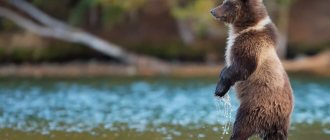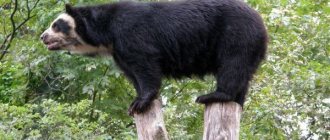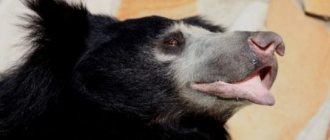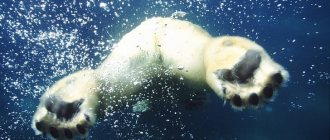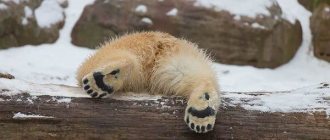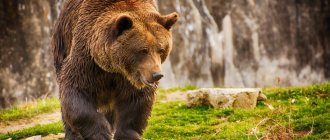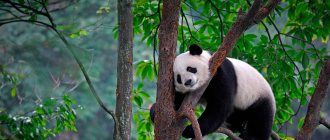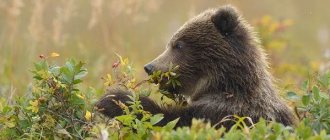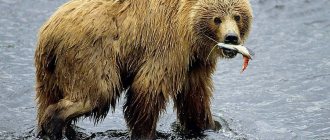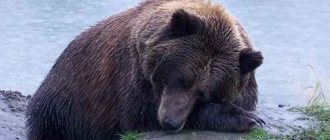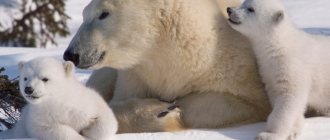January 11, 08:15
This material is also available in Ukrainian
Brown bear (Photo: Janko Ferlič via Unsplash)
What conclusions can a person draw about himself by observing a species whose ancestors inhabited present-day Europe 20 million years earlier than the first people? NV explores it together with WWF-Ukraine and psychologist Svetlana Roiz.
The brown bear (Ursus arctos) is one of the largest land predators, and the largest in Ukraine. Different subspecies of brown bears live all over the world, for example, grizzlies live in Alaska. In Europe, brown bears are relatively small and inhabit mainly mountainous areas. In Ukraine - the Carpathians.
Ancient cultures perceived the bear at the human level as the owner of the forest, protecting the natural world. Modern science gives the bear the same mission. But he calls it not a host, but an “umbrella species” - the existence of many other representatives of ecosystems depends on it.
Features and habitat of the brown bear
The brown bear (Ursus arctos) belongs to the bear family and is second in size only to its Arctic counterpart. The description of the brown bear must begin with its unprecedented growth.
The largest brown bears live in the Alaska region and are called Kodiaks. Their length reaches 2.8 m, height at the withers – up to 1.6 m, the mass of clubfooted giants can exceed 750 kg. The largest brown bear captured for the Berlin Zoological Park weighed 1134 kg.
Our Kamchatka bears are practically no different in size. The average length of a brown bear ranges from 1.3-2.5 m, weight - 200-450 kg. As a rule, males are 1.5 times more powerful and heavier than females.
The body of the forest hero is covered with thick, dense hair, which protects it from annoying insects in the summer heat and from the cold in the autumn-spring period.
The coat consists of short fluffy fibers to retain heat and longer ones to protect from moisture. The hair grows in such a way that in rainy weather the drops roll off the fur, almost without wetting it.
Color – all shades of brown. Bears of different climate zones differ: some have golden-fawn coats, while others have close to black coats.
Bears living in the Himalayas and Rocky Mountains are distinguished by light-colored hair tips in the back area, while those living in Syria are mostly red-brown. Our Russian bears are mostly brown in color.
Bears shed once a year: it begins in the spring during the rutting period, and ends before winter. Autumn molting is sluggish and imperceptible; the fur is completely replaced shortly before entering the den.
Brown bears have a prominent hump in the photo - this is a mountain of muscles in the withers area, which allows the animals to dig the ground with ease. It is the muscles of the upper back that give the bear enormous striking power.
The head is heavy, large, with a well-defined forehead and a depression in the area of the bridge of the nose. In brown bears it is not as elongated as in white ones. The ears are small, as are the deep-set eyes. The beast's mouth is equipped with 40 teeth, the fangs and incisors are large, the rest are smaller (vegetarian).
The bite force of a brown bear is monstrous. The special structure of the skull, the so-called sagittal ridge, provides more area for the development and attachment of the jaw muscles. Four bear fangs bite with a force of 81 atmospheres and are capable of tearing off huge chunks of flesh.
The paws are powerful and impressive. Each has 5 fingers and huge claws (up to 10 cm), which the bear cannot retract. The feet are covered with thick and rough skin, usually dark brown in color.
The claws are not intended for hunting; the bear uses them to dig up roots, tubers, and bulbs that are part of its diet. Apart from humans, only bears can walk upright, leaning on their hind limbs.
The peculiar gait, mentioned in more than a dozen fairy tales, is explained by the fact that when a bear walks, it steps alternately on both left paws, then on both right paws, and it seems as if it is waddling from side to side.
Of all the senses, the bear’s weakest is vision, hearing is better, but the sense of smell is excellent (100 times better than a human’s). A bear can smell honey 8 km from a hive and hear the buzz of a swarm of bees 5 km away.
The territories where the brown bear lives are huge. They inhabit almost all of Eurasia and North America, excluding the southern regions. Everywhere these animals are considered quite rare; large populations exist in the northern states of the USA, Canada, and of course, in Siberia and the Far East.
The brown bear is an animal of the forest. They prefer impassable thickets of taiga forests with peat swampy areas and small rivers. In rocky areas, clubfoots live under the canopy of mixed forests, near gorges and mountain streams.
Depending on their habitat, scientists distinguish several subspecies of brown bear, differing largely only in size and color. Not everyone knows that the grizzly bear is not a separate species, but only a variant of the brown bear that lives in the vastness of North America.
Typically, the closer to the pole, the larger the brown bears are. This is easily explained - in harsh conditions, it is easier for massive animals to keep warm.
Track sizes
The age of the animal can be determined by the size of the sole. It is important to take into account that bears of different subspecies have different paw sizes. Here is the width of the paws of bears living in taiga areas:
- for a bear cub – 5-7 cm;
- for a bear no more than one and a half years old that has survived the winter - 8-10 cm;
- for an adult bear - 14-18 cm, especially large individuals can have a print 20 or even 30 cm wide;
- for a female bear – 11-18 cm.
The age of a bear can be determined by the size of its paw prints.
The size of an animal's paw depends on the conditions of its development. If a bear cub was born in a bad year or lost its mother early, it will grow slowly and its tracks will be smaller. The length of the claws on the front paws can reach 10 cm.
The character and lifestyle of the brown bear
Brown bears are territorial loners. The territory of a male can be up to 400 km², while that of females with offspring is 7 times less. Each bear marks the boundaries of its territory with scent marks and scratches on tree trunks. Animals lead a sedentary life, wandering only in the direction of areas with more accessible and plentiful food, or away from humans.
One of the characteristic features of a bear’s behavior is its persistence. Stubbornness manifests itself both when obtaining a large amount of food and for the sake of a piece of delicacy.
So, in late autumn, seeing a lonely fruit hanging on an apple tree, the bear will first try to reach, then try to climb, and having failed on the flexible branches, it will begin to shake the tree until it takes possession of the apple.
Another trait inherent in bears is an excellent memory. They are easy to train, especially at a young age, and are incredibly intelligent. Many hunters note that bears who have previously seen a trap and its work throw large stones or sticks at it, and, having neutralized it, eat the bait.
Bears are very curious, but they try to avoid meeting people. But if this happens, the behavior of the animal depends largely on when it noticed the person and who was there before.
He can watch people picking berries or mushrooms, and then appear in all his splendor, irritated by someone's loud scream or laughter. After this, he usually makes a small but sharp leap forward, snorts with displeasure, but does not attack.
A minute later, the owner of the forest turns around and slowly leaves, looking back several times and stopping. Rapid mood changes are the norm for bears.
Another example is when a bear encounters a person by chance and suddenly, being frightened, as a rule, empties its intestines. This is where the name “bear disease” comes from.
It's no secret that brown bears hibernate. Before settling down for the winter, they feed especially actively to accumulate enough fat. The weight of a brown bear sometimes increases by 20% in autumn. Going to the place of the den (a depression filled with windbreaks or a secluded place under the roots of a fallen tree), the bear meanders, confusing its tracks.
The bear remains in suspended animation for 2.5 to 6 months, depending on its habitat and climatic conditions. During sleep, body temperature remains at 34°C. Males and females expecting offspring sleep separately. Mother bears with first-year cubs lie down together. Paw sucking is typical only for babies.
A bear's dream is very sensitive. If you wake him up in the middle of winter, he will no longer be able to go back to sleep and will wander through the snowy forest, scanty for food, angry and irritated.
The worst thing is to meet a connecting rod bear. Unlike other times, he will definitely attack. During the hibernation period, the weight of a brown bear decreases by an average of 80 kg.
bearplanet.ru
Brown bears are important predators and seed dispersers in the ecosystems in which they live.
Brown bears are subject to regulated trophy hunting throughout much of their range. Brown bears are used for meat and skin, but these products do not currently have high commercial demand. Some parts of the bear (such as the gallbladder) are highly prized in the traditional Asian medicine market, although no real, documented medicines have been derived from these parts.
Currently, the brown bear helps develop the ecotourism industry, especially in areas such as Yellowstone National Park, Wyoming and parts of Alaska.
The brown bear has long been considered the most dangerous animal in North America, although the actual danger of attack from these animals is often exaggerated. In general, brown bears try to avoid contact with humans and do not attack, with the exception of a female with cubs and a hungry bear. They are unpredictable in temperament, often displaying aggressive and irritable behavior.
Brown bears have been widely persecuted as predators of livestock, especially cattle and sheep, although their actual impact on livestock production is probably small.
Brown bear feeding
Brown bears eat everything. Their diet contains various roots, berries, bulbs, and young shoots of trees. The plant component makes up 75% of the clubfoot diet.
They visit orchards, fields of corn, oats and other cereals. They catch insects: beetles, butterflies, and destroy anthills. On occasion, brown bears hunt lizards, frogs, small rodents, and fish.
Bears are often observed near rivers during the salmon run. They swim well and skillfully catch fish going to spawn. Carrion is another source of food.
And although hunting is not a food strategy for brown bears, they can attack deer, roe deer and even moose. They are especially active at twilight - before dawn or late evening, although they can wander through the forest during broad daylight.
Interesting Facts
In 2011, the only rehabilitation center for brown bears in Ukraine was created on the territory of the Synevyr National Natural Park.
It's easy and interesting to communicate here. Join us!
All bears, due to their diet and large size, have a noticeable impact on the flora and fauna of their habitats. Brown and polar bears regulate populations of pinnipeds and ungulates. Herbivorous species facilitate the dispersal of plant seeds. Polar bears are often accompanied by arctic foxes, which eat the remains of their prey. Bears are parasitized by a large number of endo- and exoparasites, poachers, conservationists and politicians (eg T. Roosevelt).
There are no unnecessary or superfluous creatures on earth, all living beings live and depend on each other, nature exists in harmony, which is destroyed only by man. You need to learn concepts such as what is natural selection and food chains
Reproduction and life expectancy of a brown bear
Female bears give birth to offspring at intervals of 2-4 years. Estrus begins in May and can last from 10 days to a month. Male bears during this period are characterized by loud and booming roars and aggressive behavior. Fights between rivals are a frequent occurrence and often end in the death of one of the bears.
The female bear remains pregnant for about 200 days. The development of embryos occurs only when she goes into hibernation. Cubs (usually 2-3) are born in a den in the middle of winter, deaf, blind and poorly furred. Only after 2 weeks they begin to hear, after a month - to see. The weight of a newborn is about 0.5 kg, length - 20-23 cm.
It's amazing how different maternal instinct is while in the den and after leaving it. If the bear is awakened, she will leave her lair and her foolish, defenseless babies and will never return to this place.
The mother feeds the cubs for about 120 days, then they switch to plant foods. The nutritional value of bear's milk is 4 times higher than that of cow's milk. Often, cubs from previous litters take care of their younger brothers, look after them and try to protect them. One can definitely say about the brown bear: he is not a father.
By the age of 3, young bears are capable of sexual activity and finally say goodbye to their mother. They will grow for another 7-8 years. Life expectancy in the forest is about 30 years, in captivity – up to 50.
In the Red Book, the brown bear appears as a “threatened species.” About 200 thousand individuals live on the planet, among impassable forests, of which 120 thousand are on the territory of the Russian Federation.
In their class, brown bears are one of the most majestic and powerful animals, but like other representatives of the world's fauna, they are completely defenseless against humans. Being the subject of hunting for the purpose of obtaining skins, meat and bile, they are mercilessly exterminated even today.
What do bear tracks look like in the snow?
Bear tracks in the snow do not characterize the age of the furry animal, since the area of winter prints significantly exceeds the size of the paws. What the mark will be like is influenced by the temperature outside, the fluffiness of the fur on the paws, and the location of the toes. The difference in the size of paws and tracks is especially noticeable if the bear walks across the fragile crust of crust.
In winter, the predatory animal hibernates, so it only has time to leave prints on the first snow that falls in autumn and melts in spring. In rare cases, a connecting rod bear can leave them on the winter snow.
Bear tracks in the snow are a sign that a connecting rod bear is wandering nearby
In early spring, the bear experiences severe hunger, so it becomes especially aggressive. At this time, ordinary travelers need to beware of it and immediately turn off the path when they discover traces.
You can't escape from a clubfoot
Bears, like humans, belong to the so-called plantigrade animals, that is, when walking, they transfer their body weight to the entire sole of the foot, unlike digitigrade animals, which include, for example, representatives of the cat and canine families.
Despite their apparent clumsiness, clumsy bears are capable of running very fast: brown bears can reach speeds of up to 50 km/h, and the highest speed developed by a bear is about 64 km/h. Thanks to such phenomenal agility, as well as unpretentious gastronomic preferences, the bear is one of the most dangerous predators on Earth.
